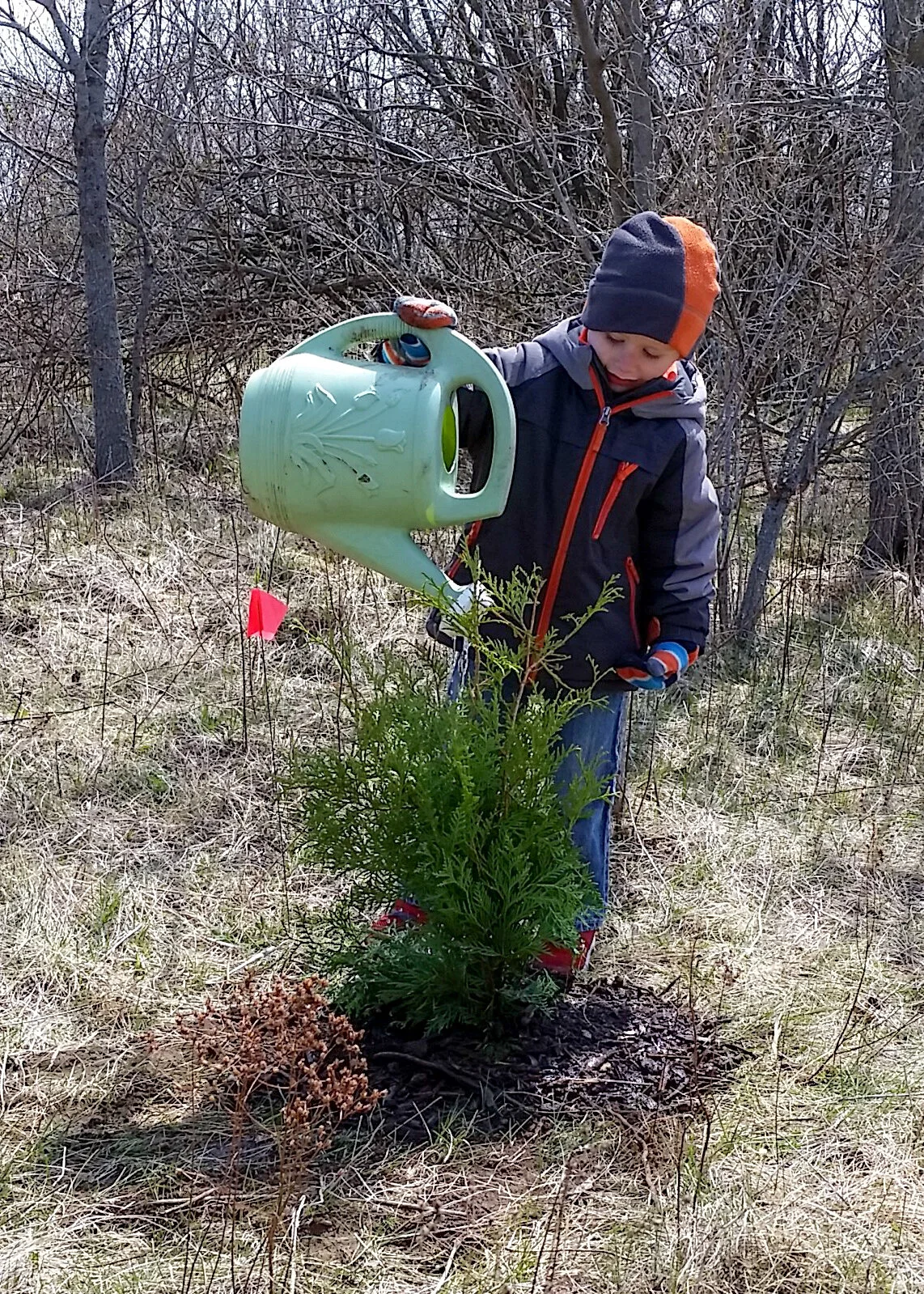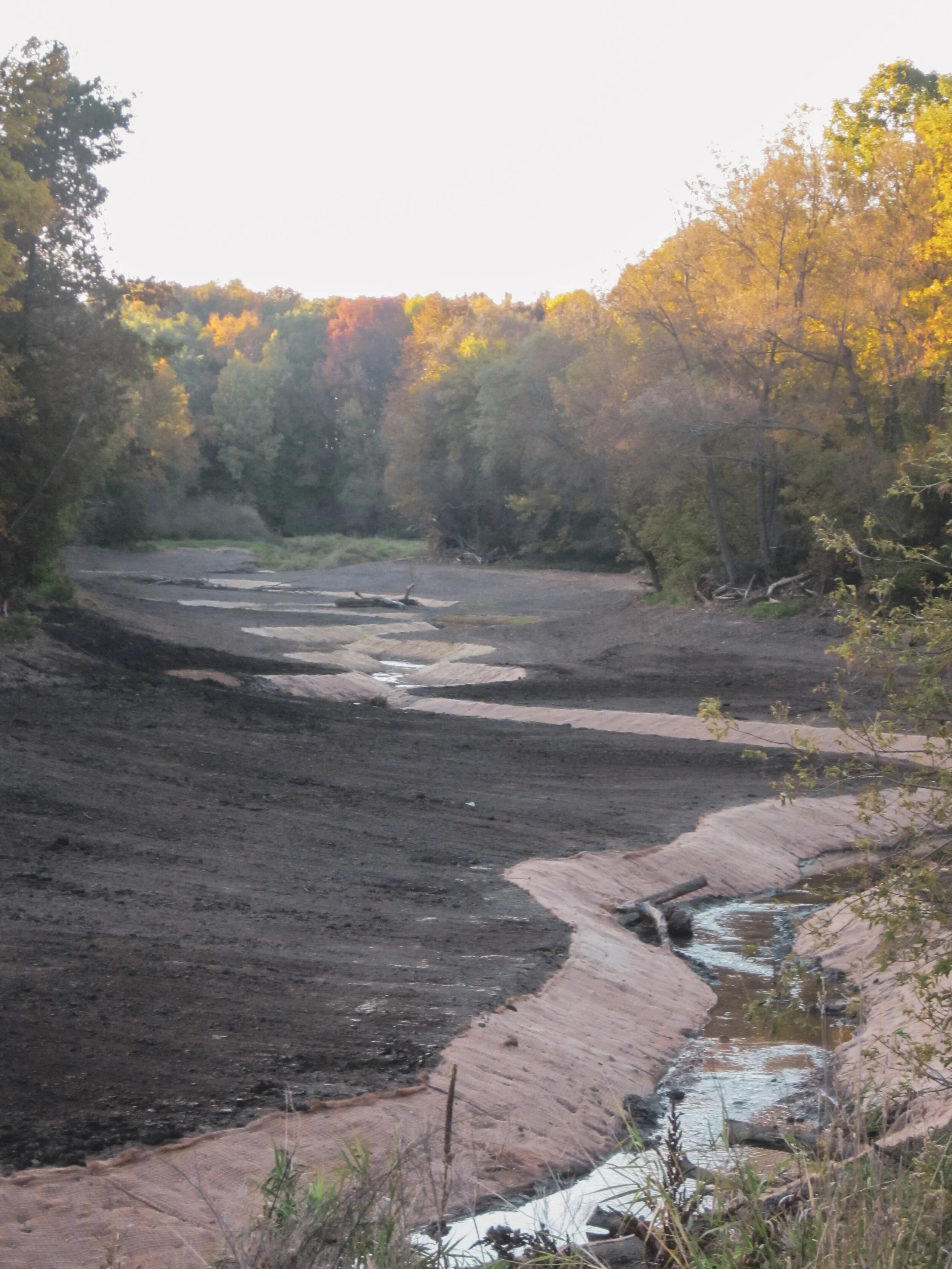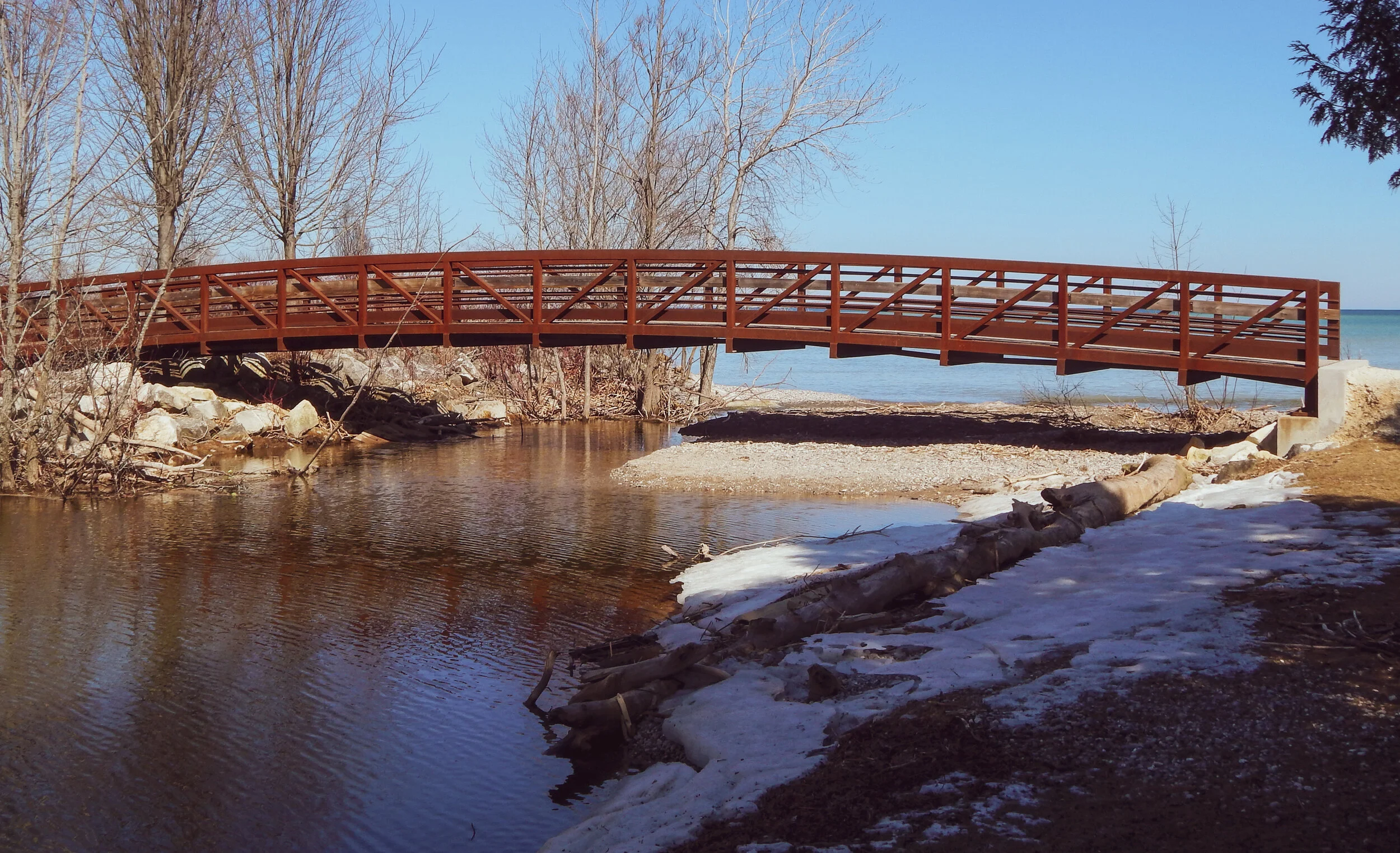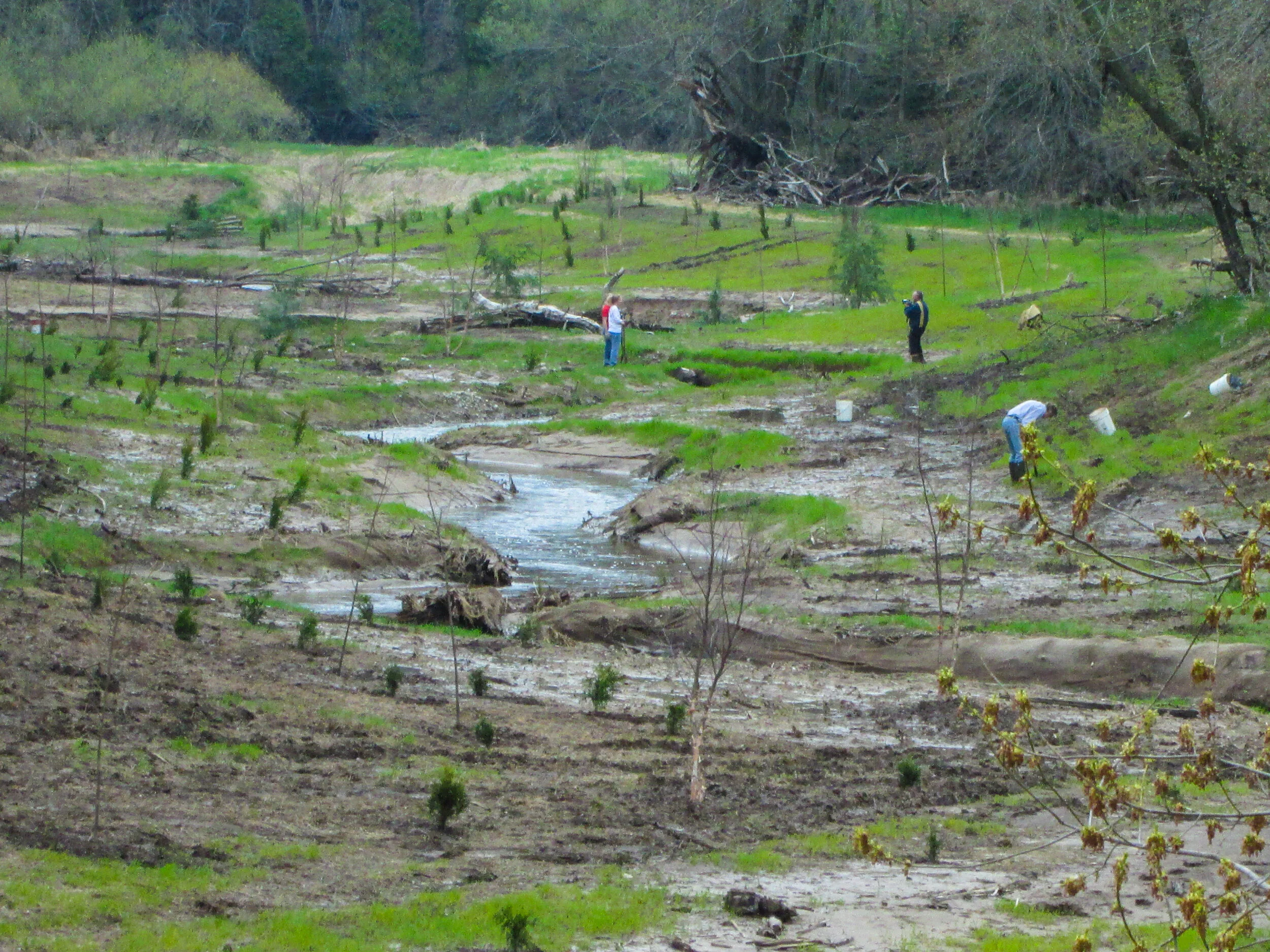Centerville Creek Restoration
Volunteers help plant trees, shrubs, and grasses to help restore the creek’s natural habitat.
The challenges that frontal watersheds of Lake Michigan face have been identified and well documented many times over in federal, state, and local reports. Many of the challenges remain the same but recently have been exacerbated by high lake levels and the impacts of climate change, including heavy and more frequent rain events.
LNRP is working with partners throughout the Lakeshore to identify potential projects that combine enhanced habitat along the Lake Michigan shoreline, while seeking ways to improve water quality. The LNRP Coastal Resiliency Project works with stakeholder groups, local units of government, and municipalities to develop and deliver on plans for cost-effective, and more resilient “built” and “natural” environments.
spring sucker run
One long-term project that was initiated in 2008 focused on a partnership with the Village of Cleveland and repairing the abandoned millpond created by the removal of the dam that powered the grist mill in 1996.
The Village of Cleveland engaged LNRP to first complete an assessment that could provide a range of options for the restoration of Centerville Creek in the project area defined by the millpond. LNRP led the effort to bring community perspectives into the project framework, initiate discussions with potential funding sources, design and implement a restoration strategy, and commit to a long-term maintenance plan that would ensure returns on these investments.
a young volunteer helps plant a tree at Fischer Creek
the beginning stages of the Centerville Creek project
The first phase of the Centerville Creek Restoration Project was completed through the development of several key partnerships established by the Lakeshore Natural Resource Partnership (LNRP) that included the Village of Cleveland, UW-Madison, UW-Manitowoc, and the Friends of Hika Bay. The Friends of Hika Bay emerged from the Citizen Advisory Committee formed to provide guidance to the design phase of the project. The creek was restored to a meandering stream constructed with pools, riffles, and other fish habitat structures. The riparian zone was planted with trees, shrubs, forbs, and grasses designed to recreate a “cedar swamp” with time. Hika Park absorbed the newly restored Centerville Creek Corridor and the Hika Shores properties to become 13.9 acres from the original 2.2 acres.
bridge at Hika Park
The initial effort restored the stream form and placed a limited number of habitat features and native planting within what was a fairly small budget. The low-key approach coupled with significant hydrologic events has led to slow rehabilitation of the project site. With funding from the US Forest Service, the Wildlife Conservation Society Climate Adaptation Fund, the Fund for Lake Michigan, LNRP and our partners are launching the next phase of restoration, habitat enhancements, and climate change adaptation. We are now going to complete the partial restoration that was started in 2012, using lessons from the storm surges in 2012 and near record high lake levels to establish stronger bank treatments and sustainable revegetation.
This phase of the Centerville Creek Restoration Project will re-establish native riparian vegetation and natural stream features to improve aquatic and terrestrial habitat. Overall, funding will support the planting of trees selected through a climate adaptive framework. These trees will be planted in the Centerville Creek corridor and in the remnant ridge swale community at Hika Shores. At Hika Shores, trees will be replacing a significant population of ash trees already severely impacted by the Emerald Ash Borer.
volunteers help plant trees, shrubs, and grasses to help restore Centerville Creek habitat
However, initial stream restoration will involve added streambank stabilization and in-stream habitat enhancements. Wood structures will be installed to (1) control hydraulic conditions to promote survival and longevity of newly planted vegetation; and (2) provide cover and refuge for fishes, reduce local sediment inputs, increase stable bed material for spawning (gravel), and increase stable substrates for macroinvertebrates. The outcome will be more robust and diverse native fish and bird populations in the ecosystem, and improved Lake Michigan water quality.
Initial stream work is being planned for spring of 2021 and with equipment in place, will be immediately followed by tree and shrub planting. LNRP will continue to provide updates on our website and the Village of Cleveland newsletter.
We hope all community members will take a moment to take a look at Hika Park with a new set of perspectives once the project is complete!
Related Links:






